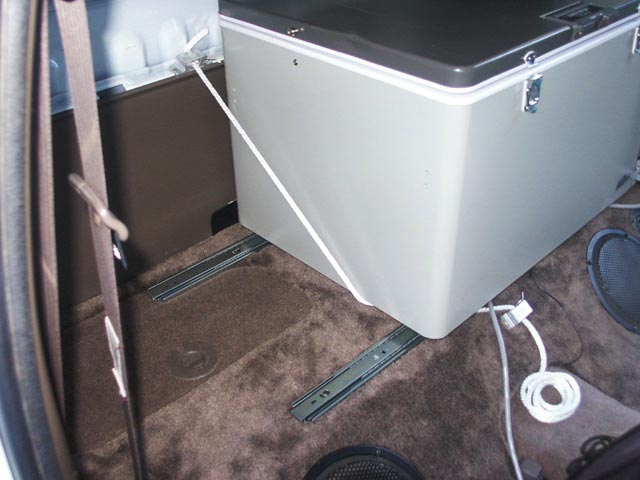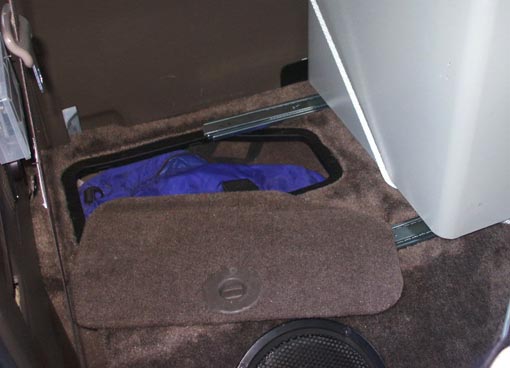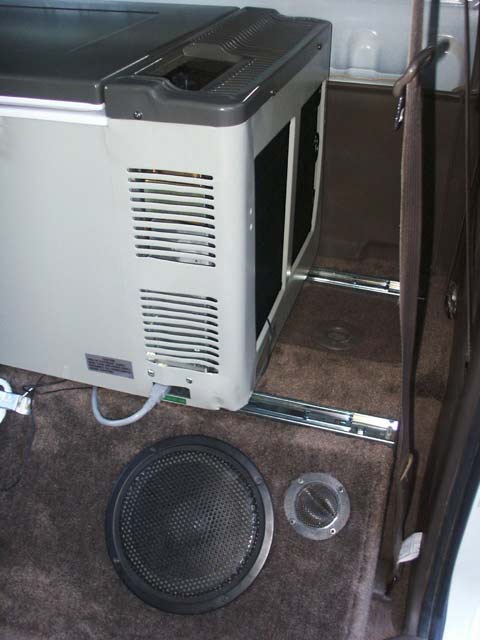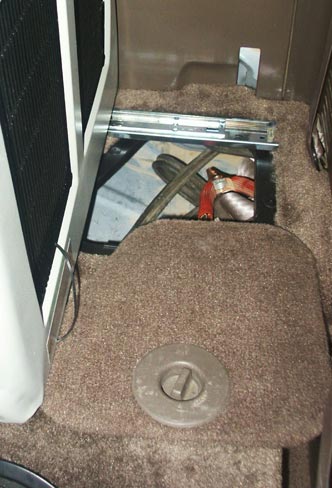

Attaching the sliders to the bench was very tricky. I had to first attach the
sliders to the feet on the bottom of the fridge, before the fridge was in the
truck. This was necessary because I had to take the rails apart from the slider
brackets in order to put the screws through the underside and then through the
feet on the fridge. After I had the slider pieces attached to the fridge, I had to maneuver
the fridge into the cab with the sliders hanging off of the bottom, one for each "foot", so it was very awkward.
After I had the fridge sitting on the deck, I had to figure out where to
place the slider brackets in order to maximize the available travel for the
fridge to slide. The problem was that before the rails on the drivers side were
fully extended, they were hitting the fixed bracket part of the sliders on the
passenger side. So some careful placement got me the best travel I could get
before one side stopped movement of the other. This scenario may have been avoided by
using a longer, single slider but that would have been a special-order item and I would
not have gained much additional travel due to the width of the cabin.

Next, I had to make sure all 4 pieces were square to the deck. Then I had to use a drill to make holes through the slider assemblies and the deck in locations that would allow me to not only get the screws through, but also be able to access the screws from under the deck to put the washers and nuts on. There are 2 screws per each "foot" and slider. (I think I used #12 phillips head screws) The screws go through the slider bracket, through the deck, and are fastened with 1" fender washers, nuts and loc-tite thread sealant. The screws on the 2 back sliders go through the OEM sheetmetal bench (where the original seats were mounted) and the front 2 screws go through the wood deck that I built. The back screws had to be accessed by reaching inside of the little storage compartments that were under the factory bench. The front screws were accessed by reaching inside of the speaker holes that I cut in the new part of the deck.
